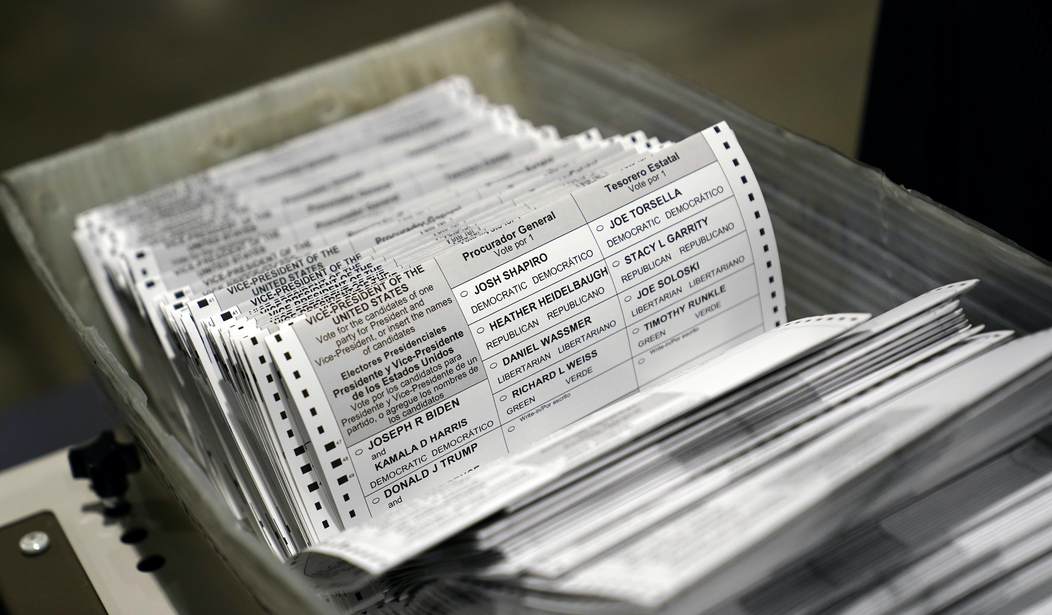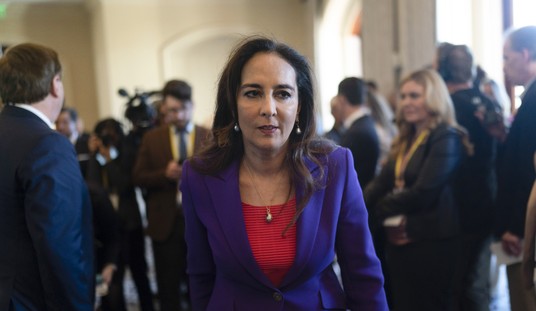Former Michigan Assistant Attorney General Zach Larsen on Sunday signed an affidavit detailing his experience seeing "voting irregularities" in precincts throughout the state.
According to Larsen, he spent Election Day as a "roving attorney and credentialed poll challenger," along with another group of attorneys. Larsen stated the group visited 20 to 30 precincts throughout Lansing, East Lansing and Williamston that day. On Election Day he had the ability to visually inspect poll books and watch as poll workers counted ballots.
It was Wednesday, Nov. 4th when the issues began.
From the affidavit:
Larsen stated in his sworn testimony that at the TCF Center in Detroit, election workers weren't complying to ballot counting the way he was told it was supposed to take place.
When I arrived at a counting table and began to observe the process, I noticed immediately that part of the process that was being implemented did not conform to what I had been told in my training and the materials that I had received.
Specifically, the information I had received described the process that was supposed to be occurring at the tables as follows.
A first election official would scan a ballot. If the scan did not confirm a voter in the poll book, that official would then check the voter against a paper copy “supplemental poll book.”
The official would then read the ballot number to a second election official and hand the ballot to that official, who would remove the ballot (while still in the secrecy sleeve) and confirm the ballot number. That second official would then hand the ballot (in the secrecy sleeve) to a third official who would tear the stub off of the ballot, and place the stub in a ballot stub envelope, then pass the remaining ballot to a fourth official.
The fourth official would then remove the ballot from the secrecy sleeve, flatten the ballot to ensure it was capable of processing, and visually inspect for rips, tears, or stains before placing the ballot in the “ballots to be tabulated box.” However, if that fourth official identified a concern, she would place the ballot back in its envelope and into a “problem ballots” box that required additional attention to determine whether they would be processed and counted. A copy of a diagram that I had received on this process is attached as Exhibit A to this affidavit.
What I observed immediately was that the secrecy of the ballot was not being respected.
Instead, the second official at the table where I was observing was repeatedly placing her fingers into the secrecy sleeve to separate the envelope and visually peek into the envelopes in a way that would allow her to visually observe the ballot and identify some of the votes cast by the voter.
Sometimes, the third official whose job was merely to remove the stub from the ballot would likewise remove the ballot from the secrecy sleeve or otherwise peek to observe the ballot. Sometimes a ballot would be removed completely from the secrecy sleeve and then placed back inside and passed along this process.
I conferred regarding this issue with another challenger at a nearby table, and he indicated he had observed similar irregularities regarding the use of the secrecy sleeves.
When that challenger raised the issue with a supervisor, and he was immediately asked “why does it matter?” and “what difference does it make?”
Beyond the legal requirements for maintaining ballot secrecy, both of us were concerned that the violations of the secrecy of the ballot that we witnessed could be or were being used to manipulate which ballots were placed in the “problem ballots” box.
Recommended
Larsen stated another challenger found another issue, where some ballots were being placed into "problem ballots" boxes because the voter allegedly didn't place the ballot in the secrecy sleeve. Other ballots that were at the same table but didn't have the secrecy sleeve were being moved to the "ballots to be tabulated" box.
From my experience at the first table I had visited (addressed in Paragraphs 15 through 17 above), I had also witnessed ballots that were placed into the “ballots to be tabulated” box that had arrived without a secrecy sleeve. So the differentiation among these ballots despite both ballots arriving in secrecy sleeves was perplexing and again raised concerns that some ballots were being marked as “problem ballots” based on who the person had voted for rather than on any legitimate concern about the ability to count and process the ballot appropriately.
The affidavit also stated ballots for non-eligible voters were being counted, despite their names not being on the poll book or the supplemental poll book.
According to Larsen, things got intense when he went to get a better visual of the poll book and ballots. The election official allegedly told him he had to stand at the monitor, not where he was. Larsen retorted that he had a right to "observe the process." Another election official and a Democratic challenger allegedly yelled at Larsen, saying he needed to back up.
Just minutes before at another table, a supervisor had explained that the rules allowed me to visually observe what I needed to see and then step back away. Likewise, on Election Day, I had been allowed to stand at equivalent distance from poll books in Lansing and East Lansing precincts without any problem. With this understanding, I remained in a position where I would be able to observe the supplemental poll book until I could do so for the voter whose ballots had just been scanned and did not register in the poll book.
The supervisor allegedly told Larsen that he needed to be six feet away from the election workers. He stated he would maintain as much distance as possible but still in close enough proximity that he could read the books and ballots. The supervisor disagreed and told him he needed to back up or leave. He ended up going to another table for observance.
Larsen and his colleague left the room for lunch. When an all call was made for challengers, they weren't allowed back in the room because of it being at "maximum capacity." A number of Republican challengers hadn't signed out saying they were going to lunch, meaning they were being counted in the room's capacity.
Many Republican challengers had left the room for lunch without signing out, including myself and my colleague. Accordingly, we were being arbitrarily "counted" towards this capacity limitation without actually being allowed into the room to observe.
When challengers raised this issue with the man at the door, he refused to discuss any solutions such as confirming the identify of challengers who had been previously admitted.

























Join the conversation as a VIP Member